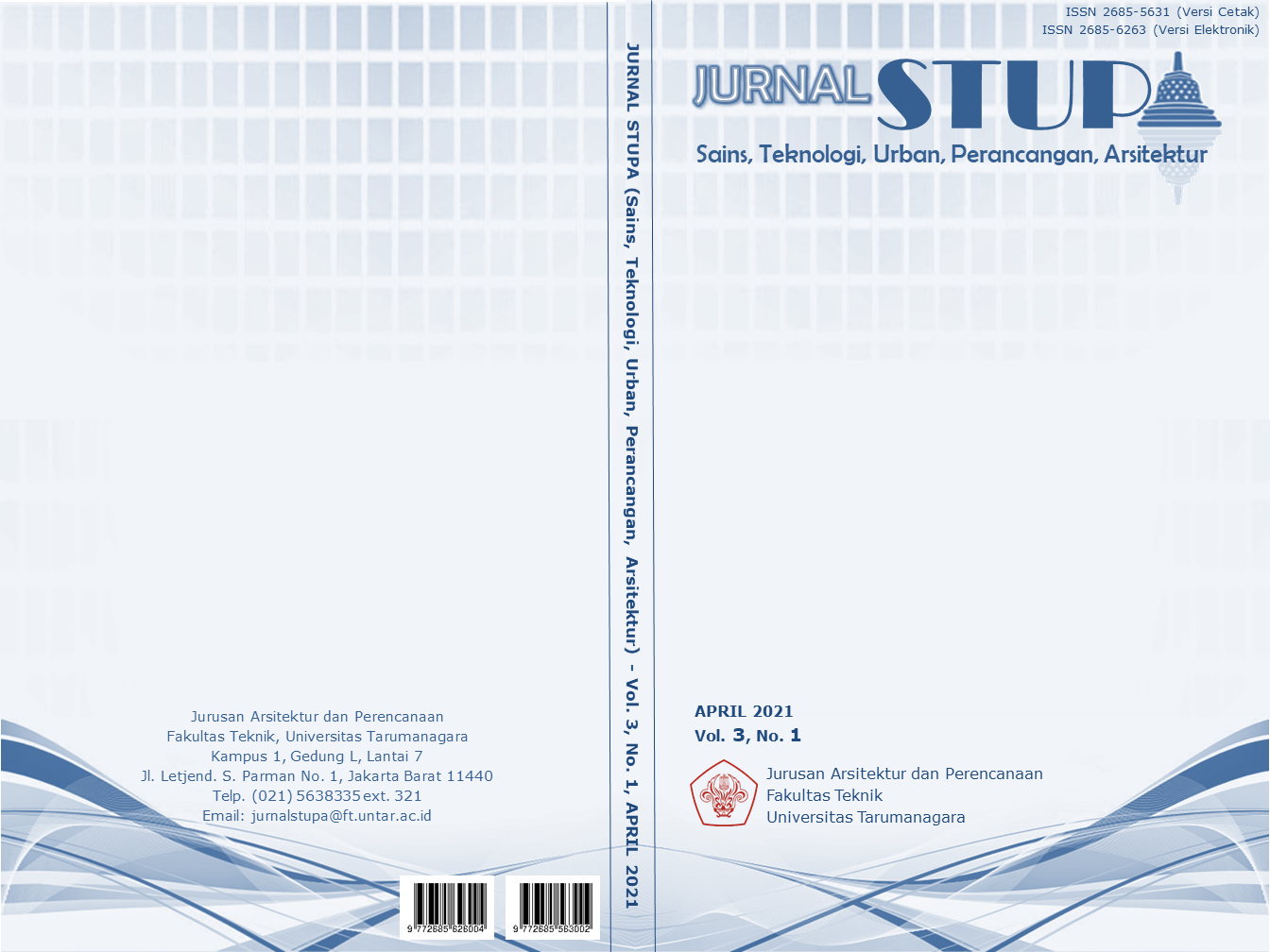RUANG PUBLIK ADAPTIF PLUIT SEBAGAI RESPONS TERHADAP KESENJANGAN SOSIAL-EKONOMI DI KAWASAN PLUIT, JAKARTA UTARA
Isi Artikel Utama
Abstrak
Gated communities in Jakarta had increased in numbers ever since the incident of 1998 riots. The Idea that was meant to create a better community carried out side-effects that highlighted the differences in terms of races and class. It led to a formation of a divided society where people would be less likely to interact with the other groups. The upper middle class chinese is one that has grown colder toward the larger society. This can be seen clearly in how the height of fences in local houses has kept increasing up until now. They rarely use public spaces where people from different backgrounds are present. And as long as public buildings come as an intervention from the outside world, this group will remain untouched. The Adaptive Public Space in Pluit is based on an idea called "Living Architecture" that thinks of architecture not as a final product. Rather, it embraces the possible architectural changes that could happen as a means of adapting in respose to future changes. Though both the idea and the building comes as an intervention, its sustainability fully depends on the contribution of the locals. Participatory design method is applied not in the pre-construction phase, but instead, in the process of maintaining the continuity of this project. It is a place where those who live in abundance materially can donate anything they want to those in need around them, solving issues caused by the social gap through a small scale project. This is a project in which people are asked to be a participant and not just a guest.
Keywords: change; contribution; donate; gated community; social gap
Abstrak
Sejak kerusuhan 1998, komunitas berpagar telah tumbuh signifikan dalam hal jumlah di Jakarta. Ide yang awalnya ditujukan untuk menyediakan lingkungan yang lebih aman justru semakin menegaskan perbedaan yang ada dalam hal etnis maupun kemampuan ekonomi. Hal ini menyebabkan masyarakat semakin terbagi dan tidak terbiasa berinteraksi dengan kelompok yang berbeda. Etnis Tionghoa menengah atas adalah salah satu yang semakin menutup diri dari lingkungan sekitarnya. Hal ini terlihat jelas pada semakin tingginya pagar rumah dan intensitas penggunaan ruang publik bersama oleh kelompok ini sangat rendah. Dalam menghadapi hal ini, pembangunan ruang publik belum dapat menjawab persoalan yang ada karena masih berupa intervensi langsung dari pihak luar. Berangkat dari tema arsitektur yang hidup, Ruang Publik Adaptif Pluit hadir bukan sebagai produk akhir arsitektur tetapi awal dari upaya adaptasi sebuah produk arsitektur terhadap lingkungan saat ini dan perubahan yang akan datang. Program dan bangunan yang ada merupakan bentuk intervensi dari dunia arsitektur namun keberlangsungannya bergantung penuh pada peran warga lokal dalam keseharian mereka. Dalam hal ini metode perancangan partisipatori diterapkan bukan dalam perancangan tetapi dalam kelanjutannya. Sebagai tempat di mana kelompok menengah atas bisa mendonasikan dari kelebihan mereka kepada yang membutuhkan, ketegangan akibat kesenjangan sosial diharapkan dapat diselesaikan dari skala terkecil. Ruang publik yang memberikan ruang bagi penggunanya untuk menjadi partisipan dan bukan sekedar tamu.
Rincian Artikel
Referensi
Blakely, E.J. dan Snyder, M.G. (1997). Divided We Fall: Gated and Walled Communities in the United States. In N. Ellin, Architecture of Fear. New York: Princeton Architectural Press.
Blakely, E.J. dan Snyder, M.G. (1997). Fortress America, Gated Communities in the United States. Washington D.C: Brooking Institution Press.
Budihardjo, E. (1984). Arsitektur dan Kota di Indonesia. Bandung: PT. ALUMNI.
De Certeau, M. Trans. Steven R. (1984). The Practice of Everyday Life. Berkeley: University of California Press
Dick, H. dan Rimmer, P.J. (1998). Beyond the Third World City: The New Urban Geography of South-east Asia, Urban Studies, 35(12), PP. 2303-2321.
Leisch, H. (2002). Gated Communities in Indonesia. Cities, 19(5), hal. 341-350.
Naka, T. (2019). Two Cycles. Tokyo: Lixil Publishing.
Sennet, R. (1977). The Fall of Public Man. Cambridge: Cambridge University Press.
Sutanto, A. (2020). Peta Metode Desain. Jakarta: Universitas Tarumanagara
Quintal, D. dan Thompson, S. (2007). Gated Communities: The Search of Security. New South Wales: The University of New South Wales.



